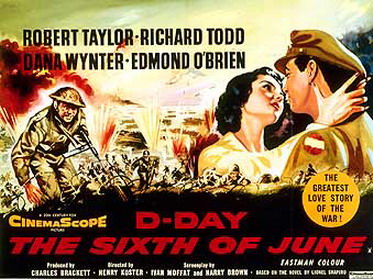“Winter in Wartime” is a Dutch
movie based on a young adult novel by Jan Teurlouw. It was directed by Martin Koolhoven who
decided to aim at a more mature audience than the book. The film was a huge hit in the Netherlands and
was voted movie of the year by the Dutch press.
The film is set in occupied
Netherlands in January, 1945. A British
plane crashes outside a Dutch town and the surviving crewman is forced to shoot
a German soldier who discovers him hanging from a tree that his parachute is
ensnared in. A fourteen year old boy named Michiel (Martin Lakemeier) and his
friend stumble upon the crash site and their faces evidence the excitement of
teenage boys who see only the glamour of war.
The local town is divided between citizens who
collaborate with the Germans and those who secretly work against them. Michiel’s father is the mayor and he is in the
group that tries to tolerate the Germans as a matter of survival. This is contrasted by Michiel’s uncle Ben
(Yorick van Wangingen) who is associated with the Resistance. Although Michiel does not resent his father’s
attitude, he clearly idolizes his uncle.
The movie avoids cliché by not putting Michiel in the middle of a
struggle for his soul.
Michiel’s teenage world is
overturned when two friends are outed as Resistance members and Michiel is left
as caretaker of the British airman Jack (Jamie Bower) who has been hidden in
the forest. Michiel is thrilled with the
adventure of it all. Michiel is forced
to involve his sister Erica (Melody Klaver) because she is a nurse and Jack has
an injured leg. Naturally, romance
develops. Uncle Ben is also brought in
because Jack has a package that needs to be delivered back to England.
| Erica and Jack (no, he's not a vampire) |
Two escape attempts by Jack and
Michiel are foiled. Meanwhile, the
Germans discover the body of the dead German and take hostages in the town to
force revealing of the “murderer”.
Michiel’s father is one of the hostages.
Jack wants to turn himself in, but Uncle Ben promises Michiel he can get
his father released. No one questions
how a shady resistance operative will convince the Nazis to do this. Uncle Ben promises more than he can deliver. However, he will make up for this by aiding
in the escape of Jack. This gets
complicated when one of the quartet turns out to be not who they seem to be.
| don't you want to know who Michiel is about to shoot? |
“Winter in Wartime” is a well-made
film. The winter setting is snowily
pristine which is contrasting to the underlying malevolence of Nazi
occupation. The cinematography is an
interesting blend of styles. There is
some hand-held, some slo-mo, and some POV.
The score is your basic epic orchestral.
It fits well. Not too pompous or
manipulating. The movie is not violent
or graphic and the language is not strong.
It is very perplexing why this movie was rated-R.
The plot has weaknesses. The several escapes are implausible. The Nazis lack persistence and Jack and
Michiel are two lucky dudes. The romance
between Jack and Erica seems thrown in, but it does not sour the movie. The strength of the plot is in the twisty,
thought-provoking ending. The film
finishes strong. The theme of how war affects
young people is explored effectively.
Michiel evolves from wide-eyed innocence to hardened stoicism. His excitement upon discovery of the downed
plane and then the downed airman contrasts with some of the very hard adult
decisions he ends up having to make.
Within a week he goes from teenage boy to prematurely aged young
man. This has been seen before, but
Lakemeier is up to the task. The rest of
the cast is satisfactory.
The film attempts to explore the
dynamics of an occupied town. Some of
the citizens (like neighbor Shafter) are collaborators. Some, like Michiel’s father, are just trying
to survive by tolerating the Nazis.
Others, like Uncle Ben, are actively working against the occupiers. This was reality. The movie clearly depicts the dangers of
being in that last group. Curiously, the
movie does not take the time to develop empathy for the Dutch people. The
townspeople are not really suffering under Nazi domination. There are some shocking examples of violence,
but they seem thrown in to advance the plot.
 |
| so, you thought war was exciting? |
I meant to read the book in
conjunction with this review, but my local library could not get it. Based on Caroline’s excellent review at Beauty is a Sleeping Cat, it is
apparent there are some differences between the movie and the book. I gathered from what Caroline writes that the
parents in the book are much more involved in the Resistance than they are in
the movie. Michiel’s father is not an
ass-kisser like Shafter, but he is not using his home to aid the Underground. Caroline says: “Every night they open their doors to distant relatives,
people on the run, displaced persons, provide shelter and food for one night.” This does not happen in the movie which is
good because the movie widens the gulf between the father and the uncle.
The movie also does not really show
hardships like hunger affected the people.
The movie does not spend a lot of time on the village dynamics.
“Winter in Wartime” is an
entertaining movie, but does not belong with the greats of the Resistance
subgenre. Focusing on a teenage boy is a
nice touch and instructive. Although the
director targeted it at a more adult audience than the novel, the movie still
works best if aimed at a teenage audience.
It has an important “what would you do?” vibe to it.
grade = B-
